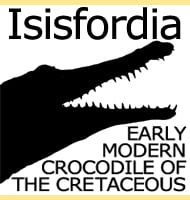In Depth
One of the earliest known ankylosaurs, Shamosaurus is regarded as being very similar to Gobisaurus, however there is enough fine detail differences in the skulls of the two genera that palaeontologists are confident in assigning these two ankylosaurs as separate genera. Unfortunately there are not yet enough remains to confidently estimate the size of Shamosaurus. Ankylosaurs like Shamosaurus would have developed their armour to help defend themselves against medium to large Early Cretaceous era theropod dinosaurs such as the tyrannosaur Yutyrannus which has been found in nearby China.
Further Reading
Further reading- Pervyy ankilozavr iz nizhnego mela Mongolii [The first ankylosaurs from the Lower Cretaceous of Mongolia], by T. A. Tumanova. – In, Iskopayemyye reptilii mongolii [Fossil Reptiles of Mongolia]. Trudy Sovmestnaya Sovetsko-Mongol’skaya Paleontologicheskaya Ekspeditsiya 24:110-118. – L. P. Tatarinov, R. Barsbold, E. Vorobyeva, B. Luvsandanzan, B. A. Trofimov, Yu. A. Reshetov, & M. A. Shishkin (eds.) – 1983.









